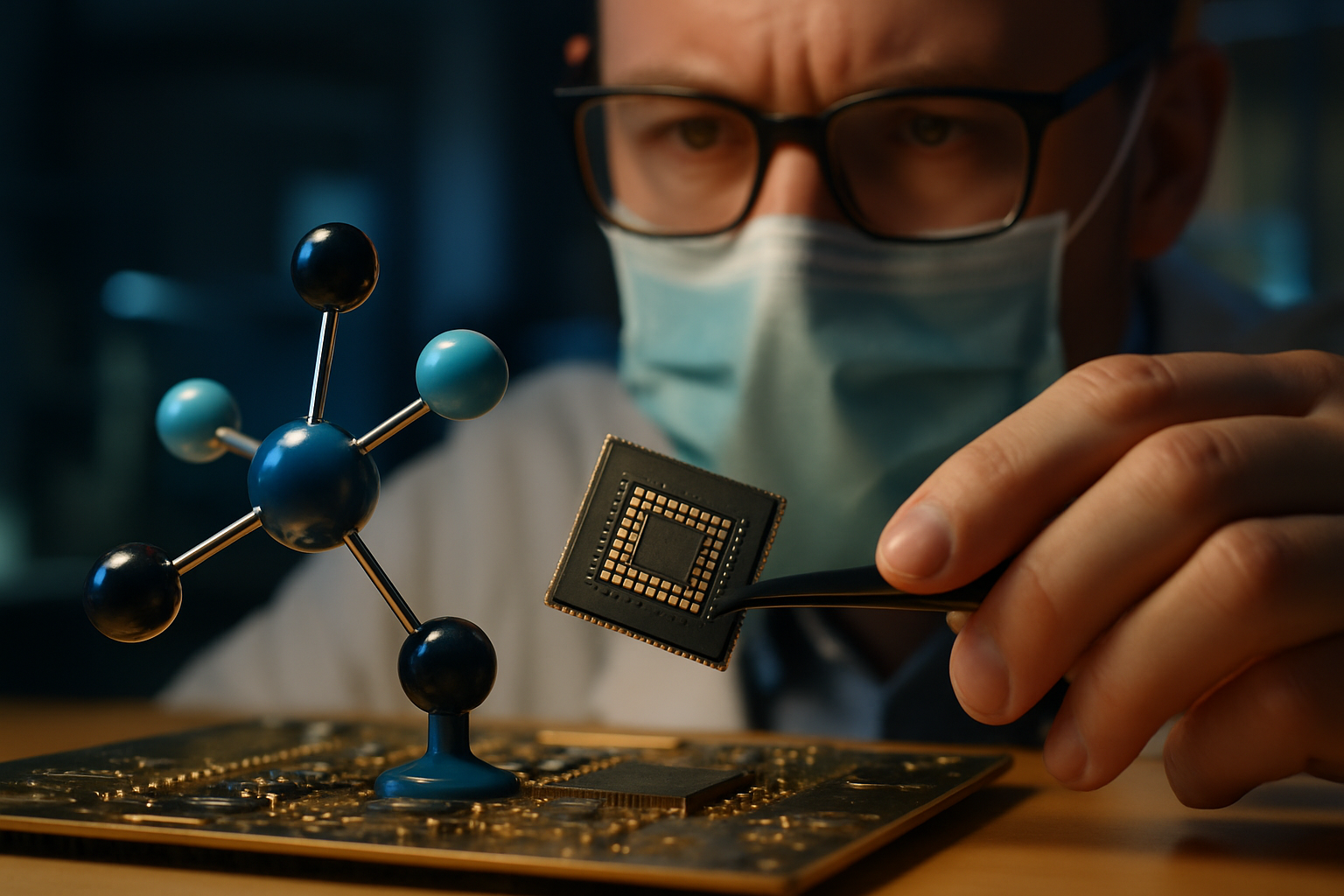Molecular Memory: Reshaping Data Storage at the Atomic Level
In a world where data is the new oil, the quest for more efficient and compact storage solutions never stops. Enter molecular memory, a groundbreaking technology that promises to revolutionize how we store and access information. By manipulating individual molecules, researchers are paving the way for storage devices that could hold astronomical amounts of data in a fraction of the space used by current technologies. Let's dive into this microscopic world where each molecule becomes a bit, and the possibilities seem endless.

A Brief History of Molecular Data Storage
The concept of using molecules for data storage isn’t entirely new. In the 1980s, scientists began exploring the idea of molecular switches that could represent binary data. However, it wasn’t until the early 2000s that significant progress was made. In 2016, a team at the University of Manchester created a breakthrough by storing 192 bits of data on a single molecule, demonstrating the immense potential of this technology.
How Molecular Memory Works
Molecular memory systems typically rely on one of two main approaches: conformational changes or redox states. In conformational-based systems, molecules switch between different shapes to represent 0s and 1s. Redox-based systems, on the other hand, use changes in the molecule’s oxidation state to store information. Both methods allow for rapid switching and long-term stability, crucial factors for any viable storage technology.
The Advantages of Going Molecular
The potential benefits of molecular memory are staggering. Current estimates suggest that a single gram of engineered molecules could store up to 215 petabytes of data – equivalent to over 200 million gigabytes. This incredible density could lead to storage devices smaller than a grain of sand yet capable of holding entire libraries’ worth of information. Moreover, molecular memory systems could potentially operate at much higher speeds than conventional storage, with some theoretical models suggesting read/write times in the picosecond range.
Challenges and Hurdles
Despite its promise, molecular memory faces several significant challenges before it can become a commercial reality. One major hurdle is developing reliable methods for reading and writing data at the molecular level. Current techniques often require specialized equipment and extreme conditions, making them impractical for everyday use. Additionally, ensuring the long-term stability of molecular states and protecting them from environmental interference remains a crucial area of research.
Recent Breakthroughs and Developments
The field of molecular memory has seen exciting progress in recent years. In 2019, researchers at Brown University developed a technique using single-atom magnets to store data, potentially allowing for storage densities of up to 25 terabits per square inch. More recently, a team at the University of Texas at Austin created a proof-of-concept device using metal-organic frameworks (MOFs) that could store data for over four months without degradation.
Potential Applications Beyond Data Storage
While data storage is the primary focus of molecular memory research, the technology could have far-reaching implications in other fields. For instance, molecular switches could be used to create ultra-compact and efficient logic gates for computing. In the realm of medicine, molecular memory systems might enable new forms of drug delivery or even serve as the basis for bio-compatible neural interfaces.
The Road to Commercialization
As with many emerging technologies, the path from laboratory to market for molecular memory is likely to be long and complex. Current estimates suggest that commercially viable molecular memory devices could be at least a decade away. However, major tech companies and research institutions are investing heavily in this field, recognizing its potential to reshape the landscape of data storage and computing.
Environmental Implications
One often overlooked aspect of molecular memory is its potential environmental impact. As data centers continue to grow, consuming vast amounts of energy and resources, the need for more efficient storage solutions becomes increasingly urgent. Molecular memory could dramatically reduce the physical footprint and energy requirements of data storage, potentially leading to significant environmental benefits.
In conclusion, molecular memory represents a fascinating frontier in data storage technology. While significant challenges remain, the potential benefits in terms of storage density, speed, and efficiency make it a field worth watching closely. As researchers continue to push the boundaries of what’s possible at the molecular level, we may be witnessing the early stages of a paradigm shift in how we store and interact with information. The journey from bits to molecules is just beginning, and the destination promises to be nothing short of revolutionary.





